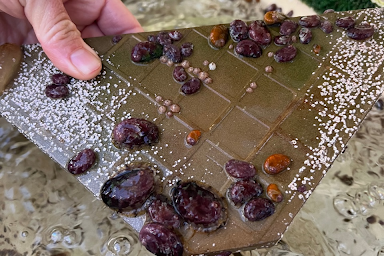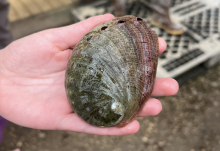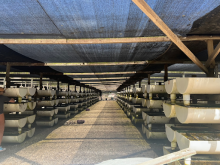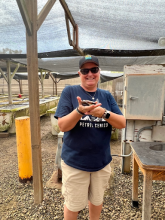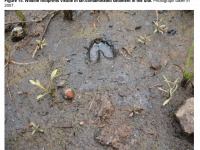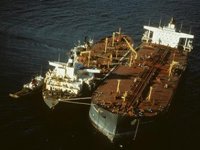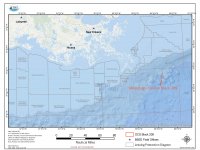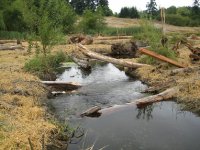Abalone Restoration to Help Boost Dwindling Populations in Southern California
November 17, 2023
Abalone are in decline in South California due to a multitude of factors. With funding from an oil spill settlement, NOAA and partners are working on restoration efforts to address this problem.
Wild abalone—both gastronomic delicacies and kelp forest stewards—were once abundant along the southern California coast. But all seven of the common southern California species have been drastically reduced in recent years due to an unfortunate ‘perfect storm’ of habitat loss, Withering Syndrome disease, and over-harvesting by commercial and recreational fishing. The California Fish and Game Commission attempted to thwart dwindling populations by pulling back on harvest-limits year after year, and the fishery was ultimately closed in 2017—until 2026 at the earliest—to allow for a regrowth in wild abalone population.
NOAA and its partners identified the Gaviota Coast Abalone Restoration Project in the final restoration plan of the 2015 Refugio Beach oil spill settlement as one of the preferred projects to compensate for subtidal injuries. The project aims to address the critical abalone shortage in two reef areas within State Marine Conservation Areas (SMCAs) that were directly affected by the oil spill. As avid grazers, red abalone and other abalone species play an important role in structuring kelp forest habitats. Restoring abalone to the SMCAs will in turn restore ecosystem function and increase protection to future impacts.
Project Restoration Goals
The 10-year goal of the project is to plant 40,000 red abalone to create a self-sustaining population at Naples and Isla Vista reefs in Santa Barbara County. Juvenile abalone will be outplanted to Naples Reef and Campus Point SMCAs, or other nearby reefs affected by the Refugio Beach spill.
Phase I of the project, which is currently underway, includes collecting wild broodstock red abalone, captive production of juvenile red abalone, selecting restoration sites, preparing abalone for outplanting, and, ultimately, the physical outplanting of 5,000 red abalone individuals. Phase I will build the foundation for Phase II, which will include biannual outplantings of 5,000 red abalone within a five-year period—with the goal of 40,000 outplanted red abalone.
The Cultured Abalone Farm will lead the captive production of juvenile red abalone, using established juvenile red abalone culture techniques. TCAF uses brood animals selected for growth and marketable characteristics, and for suitability to the culture environment and local oceanographic conditions. Their inventory of red abalone has local origins in broodstock collections from multiple locations around the Santa Barbara Channel. The abalone are considered suitable for outplanting.
Impacts of the Oil Spill
The Refugio Beach oil spill occurred on May 19, 2015, when a pipeline owned and operated by Plains All American Pipeline ruptured near Refugio State Beach. Over 100,000 gallons of crude oil were spilled, much of which ran down a storm drain and into a ravine under the freeway, entering the ocean. In October 2020, a $22.3 million settlement was finalized to resolve natural resource damage claims, restore habitats and wildlife injured by oil, and compensate the public for lost recreational opportunities. Of that amount, $6.1 million will go toward restoring subtidal and fish habitats impacted by the spill.

